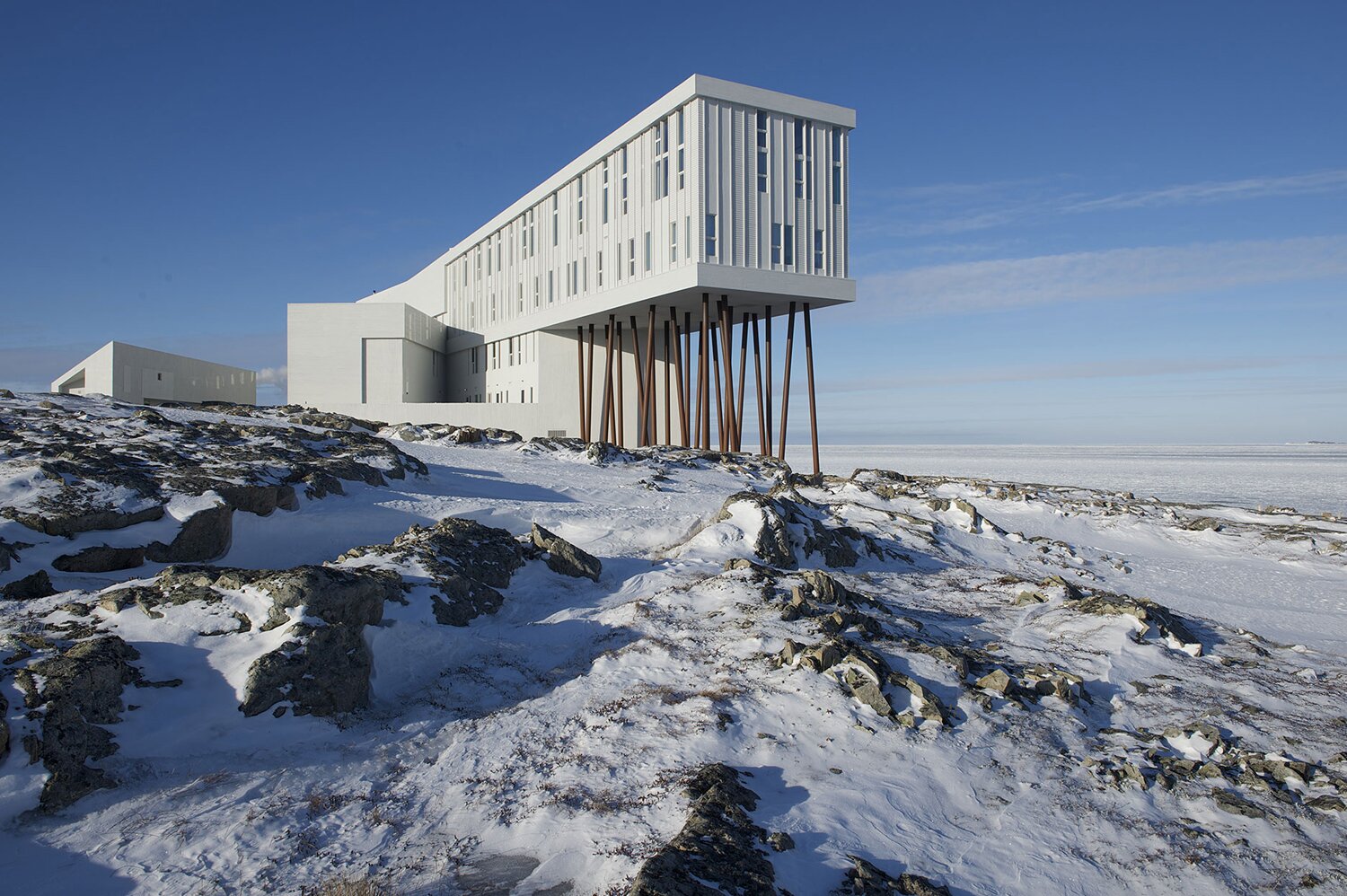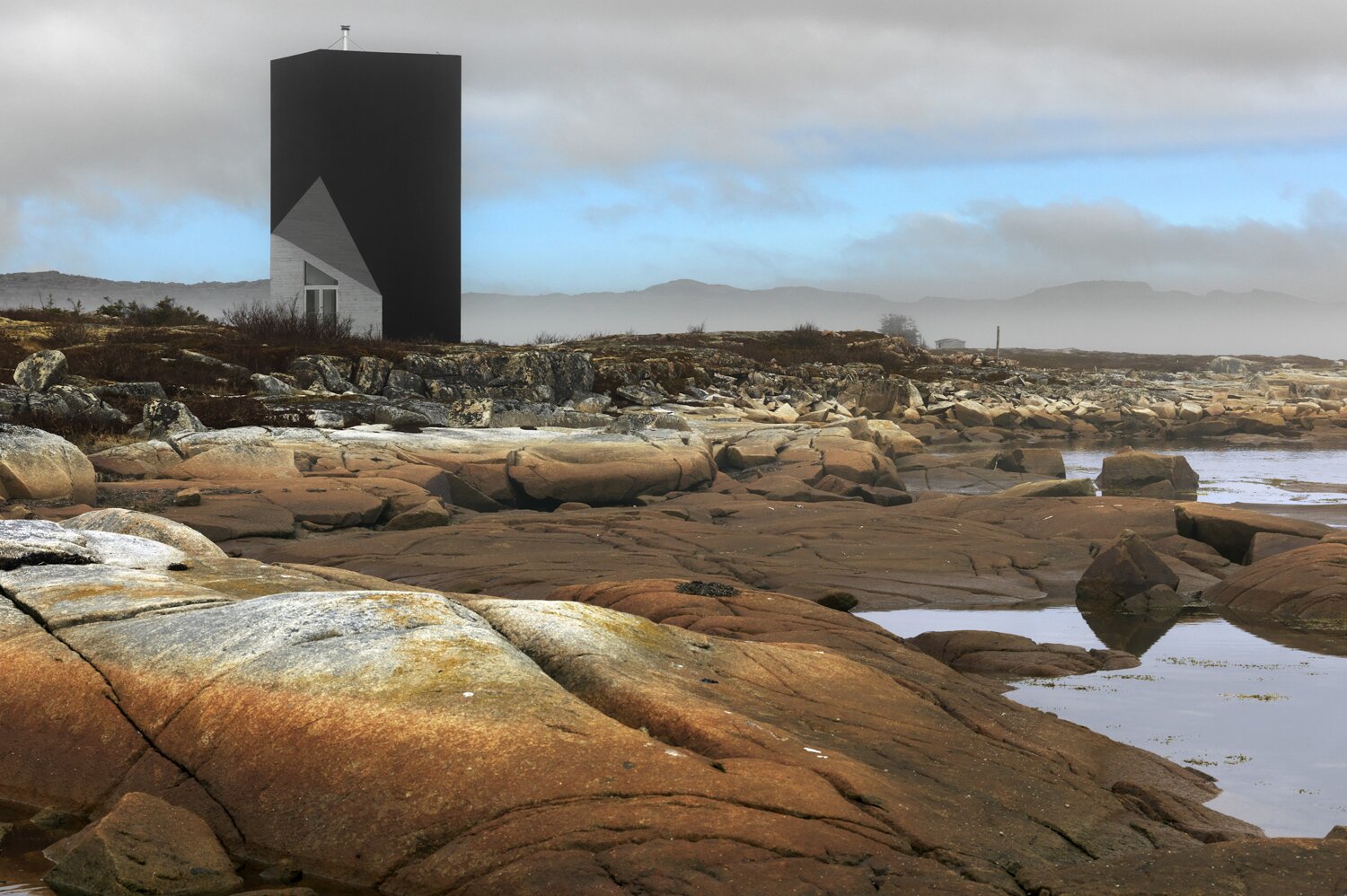Overlooking the North Atlantic, on Canada’s remote eastern tip, lies the windswept idyll of Fogo Island. Celebrating traditional crafts, wild foods, socially conscious ideals, and clean, modern architecture – the rocky, sub-arctic outcropping bears a remarkable similarity with the Nordic region.
Fogo Island isn’t the kind of place in which one arrives by accident. It takes intention and planning to get here. First, you must find your way to Newfoundland and Labrador, Canada’s most easterly province. With its own time zone and an English dialect so distinct that it has its own dictionary, Newfoundland’s colourful reputation seems well deserved. A place that Irish writer Tim Pat Coogan once famously opined as being the most Irish place in the world outside Ireland, the province is a curious patchwork of culture, history and folklore.
Mysterious Viking longhouses were discovered at Newfoundland’s northernmost point, L’Anse aux Meadows, in 1960, by the Norwegian husband and wife archaeologist team, Dr. Anne Stine Ingstad and Dr. Helge Ingstad. They traced the islands Viking heritage back to the 11th century – surprising evidence that the first Europeans in North America had actually been Scandinavian. Irish and English settlers arrived during the 16th century, and today you can still hear a gentle Irish lilt in the voices of Newfoundlanders.
Once you land on Fogo Island, it does’t take long to realize you’re somewhere a little bit, different. Fogo seems a place out of time. With a population of 2,500 people inhabiting its 10 small communities, there are no malls nor identical subdivisions that seem to sprout like weeds around Canada’s larger centres. This is a place that values conversation over commerce, where neighbours look out for one another and where locking your doors is an oddity.
Sprinkled all around Fogo Island are wharves lined with crab pots and lobster traps. Fishing stages, with their red ochre sheds, jut out into the water. Some cling desperately to the barren rock, refusing to let go, while others seem to drunkenly balance on wooden stilts. They are so common that they’ve almost become synonymous with the place. Many of them have a single white dot painted upon the door, which traditionally acted as a beacon, helping fisherman to navigate their way in the dark.
Cod was once king here. It is the very foundation upon which Fogo was built and sustained generations for centuries. But by the 1960s, years of overfishing had finally started to catch up and in 1992, a moratorium on cod fishing was called. The populations of outport communities like Fogo (which had a population of about 5,500 prior to the ban) have been dwindling ever since. But Fogo, unlike so many other former fishing communities in Newfoundland, has reason to be hopeful in recent years, thanks to one woman.
Zita Cobb, 58, grew up in the small Fogo village, Joe Batt’s Arm, with her parents and six brothers. There was no running water, electricity or paved roads, and at the time, Fogo was divided along community and religious lines. Kind, eloquent, and as down to earth as they come, Cobb says that she grew up “exceptionally local”, not even venturing into nearby village Tilting (just five kilometres away) until she was 13. She left her home at 16 and studied business in Ottawa, eventually working her way up in the technology industry in the US and Europe. When she retired at 42, she had made millions and spent the next four years sailing around the world.


